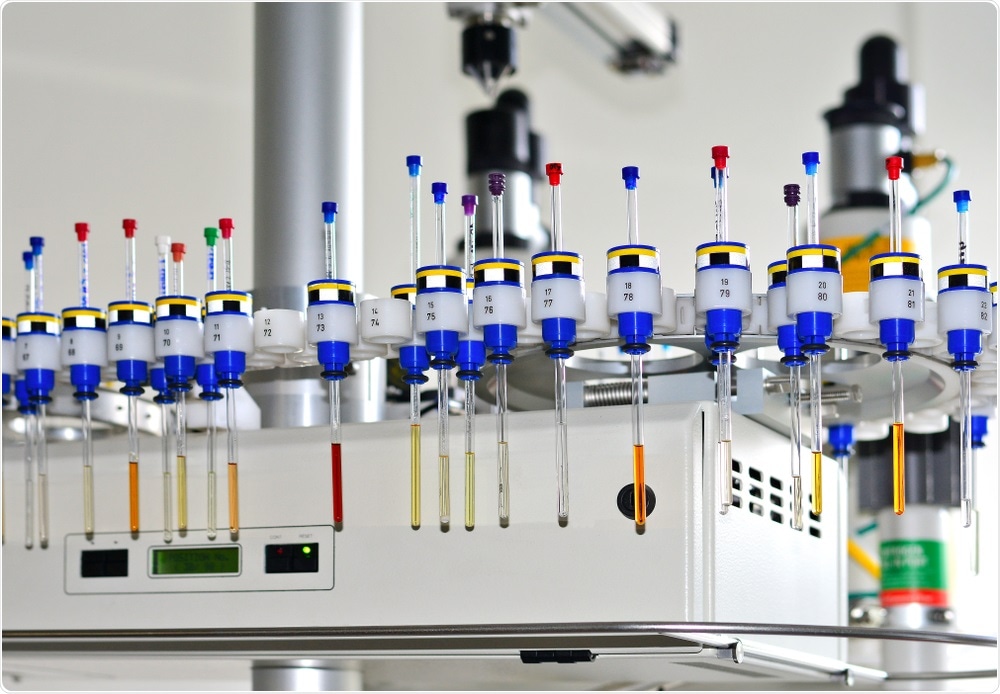Researchers at Deakin University in Australia have shown that a solid-state NMR technique can rapidly detect the presence of forensically relevant synthetic cannabinoids in a non-destructive manner, whilst requiring only minimal sample preparation.

Image Credit: Smereka/Shutterstock.com
The technique could serve as a tool for the qualitative pre-screening of herbal blends, allowing forensic investigators to prioritize samples containing previously uncharacterized illicit substances.
The situation in Australia
In Australia, illicit substances such as the synthetic cannabinoids that get sprayed on plants have been marketed as “legal highs” since 2004 and have been banned in many areas since December 2012.
So far, hundreds of related cannabinoid compounds have been identified, which makes them difficult to detect and identify. Law enforcement organizations are therefore looking for better methods than the ones currently used.
The existing techniques require time-consuming sample preparation and are destructive to samples due to the extraction process needed before separation by gas chromatography or high-performance liquid chromatography, for example.
Potentially, a combination of methods could be used to generate an accurate chemical footprint in a non-destructive manner.
Solution-state NMR spectroscopy is already used to characterize spectra of forensic interest, but this is only carried out following fractionation. Solid-state NMR (SSNMR), on the other hand, can acquire conclusive structural information in a non-destructive manner.
However, the low signal strength that results from weak nuclear polarization makes the direct detection of compounds present on surfaces difficult. Signal enhancement methods such as dynamic nuclear polarization (DNP) have been used to increase SSNMR sensitivity and are opening up new opportunities for the NMR analysis of surface compounds.
Importantly, the United Nations Office on Drugs and Crime (UNODC) wants to work with scientists to address the lacking availability of advanced methods such as NMR for use in forensics labs.
What has the current study contributed?
Now, Xavier Conlan (School of Life and Environmental Sciences, Deakin University) and colleagues have demonstrated a method that can characterize a range of synthetic cannabinoids in a non-destructive manner using an intermediate field strength and standard equipment.
The method is also relatively quick to perform and requires minimal sample preparation.
For the study, the team acquired twelve cannabinoid products and analyzed them using 13C and 19F magic angle spinning and a cross-polarization NMR technique.
As recently reported in the journal Analytica Chimica Acta, the 13C SSNMR spectra (and in some cases also 19F spectra) readily identified key structural features of synthetic compounds on the surface of herbal substrates in a highly selective and non-destructive manner.
The authors say that the qualitative cannabinoid fingerprinting the method provides only requires straightforward sample preparation and that these standard experiments do not require high magnetic fields or fast spinning rates.
Furthermore, “beyond the obvious implications for forensic analysis, the non-destructive approach has the potential to be used in other applications where herbs or plants have had compounds added (e.g., herbicides on foreign plant/vegetable imports),” adds the team.
The authors emphasize that the sample processing required is far simpler than it is with the current methods of choice for synthetic cannabinoid detection.
They say that for gas chromatography analysis, the sample grinding and extraction by ultrasonication that is required before centrifugation is a considerably more time-consuming process than the direct determination method demonstrated here.
Furthermore, the non-destructive nature of the method has important implications for forensic applications. The researchers also point out that the SSNMR approach will only become a more valuable tool, as sensitivity boosting techniques such as DNP become more widely available.
United Nations Office on Drugs and Crime recommendations
The team says that considering the UNODC recommends various techniques for synthetic cannabinoid characterization, it would be useful if SSNMR could be recognized as a relevant analytical technology.
The UNODC specifically states that the identification of new synthetic cannabinoids without reference standards is particularly challenging…and the SSNMR technique described here affords the opportunity for a qualitative pre-screening of the herbal substrate of interest allowing forensic scientists, via a simple sampling preparation protocol, to prioritize those samples that contain uncharacterized analytes.”
Conlan and colleagues
Next steps
The researchers say that although this study demonstrated the potential of SSNMR for forensic investigations, further development would still be needed for its application in real “in-field” analysis.
“To that end, benchtop NMR is rapidly developing and has the potential to significantly improve forensic analyses,” they conclude.
Journal reference:
Conlan X. The identification of synthetic cannabinoids surfaces coated on herbal substrates using solid-state nuclear magnetic resonance spectroscopy. Analytica Chimica Acta 2020 https://doi.org/10.1016/j.aca.2019.12.051